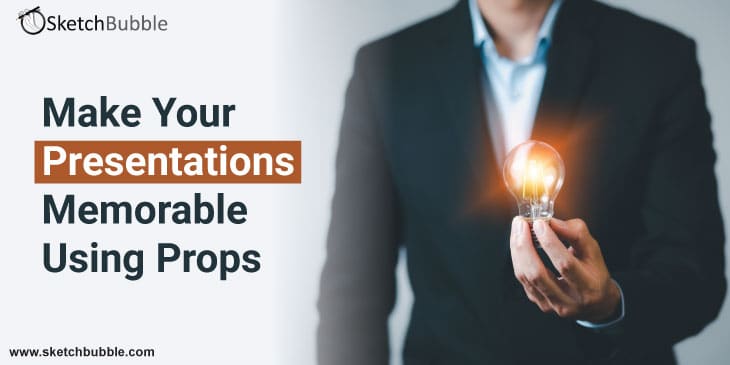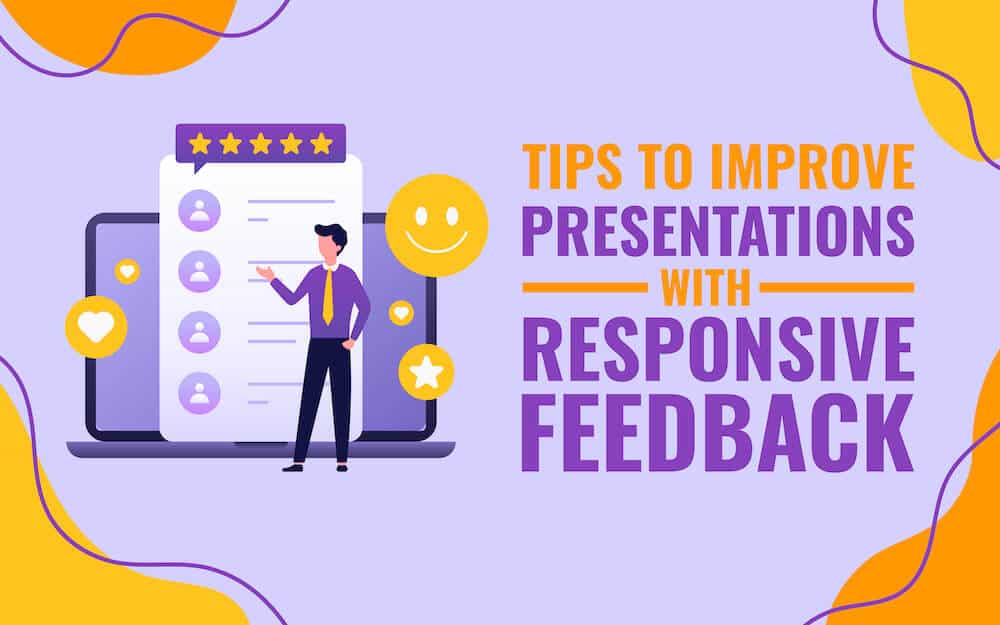
Can you recall a few geography topics that your teacher taught in the school? We are sure some geography lessons might still be inked in your mind. Have you ever pondered that out of so many lessons taught, why can you recall only a few instantly? Perhaps your teacher had used some relevant props (such as maps, globe, etc.) to support verbal instructions while teaching those particular topics. The application of props is not limited to education only; you can use them in your business presentations to make them more memorable for the audience.
Ideas that are grounded in concreteness instead of abstraction are received well and remembered by the audience for a longer time. Here, props can help you add real value to your presentations. Moreover, you can provide a multi-sensory experience to the audience, create an emotional impact, and grab their attention by complementing spoken words with relevant props. Props provide a dramatic effect and add a little “oomph” to your slideshows.
In this blog post, we have discussed how you can reap the maximum advantage of props to make your presentations stand out. Read on!
Choose the Right Prop
If props are used without a purpose, they may divert the audience, ruining all the efforts that you put in creating the impeccable presentation. So, it’s important to use the right prop to deliver your message in an apt way. Here are a few tips:
1. Ensure that the Prop Adds Value to Your Core Message
Don’t use props just for the sake of looking cool or trendy. Incorporate a prop in your presentations only if it actually makes sense, fits with the chosen topic, and gives a better visualization of abstract information.
2. Choose a Prop that is Suitable for the Venue
Does the venue have a good sound system to make your prop heard to the audience sitting at the back? Does the venue has sufficient light to make the prop seen by the small as well as the large audience? What size of the prop will work best? Check all these before committing to a particular prop.
3. Ensure the Suitability of the Prop for the Audience
If you want to make your audience feel valued, use a prop that is specific to their passion, geographical location, or culture. It will not only help you build credibility, trust, and rapport with the audience but will also portray you as a thoughtful speaker.
Use the Prop for the Best Effect
Once you have finalized the prop, make a plan to use it effectively to your advantage.
Before the Presentation
- Plan to incorporate the prop in such a way that it goes naturally with the flow of the speech.
- Test all props (sound and other aspects) beforehand.
- Keep a backup ready to avoid the last-minute hassle if the prop doesn’t work.
- If you are using multiple props, arrange them in sequence before the commencement of the presentation.
- Rehearse with the prop to be comfortable in operating and handling it.
During the Presentation
- Build anticipation for the prop.
- Create a dramatic flair before revealing the prop.
- Don’t show up the prop until it is not required; keep it hidden.
- Make sure all audience members can see the prop.
- Draw a connection between your key message and the prop, making the audience understand the relevance of the prop.
- Use the prop in a live demonstration.
- Let the audience have a close look at the prop.
- After using the prop, put it aside to avoid distraction.
Most Effective Props to Enhance Your Next Presentations
There are thousands of objects that you can use as props. Choose your imagination and think of unusual props that can have a mesmerizing impact on the audience. Think out-of-box ideas to use props for creating analogies for the points/message you are trying to convey.
1. Smell
Have you ever thought of using a prop that smells? Sounds weird, right? Well, by using such a prop, you appeal to one of the most underutilized senses, i.e., the olfactory sense. Think of clever ways to incorporate such props into your talk.
Example – Dananjaya Hettiarachchi began his 2014 world championship winning speech by smelling a rose. As most of his audience had the experience of smelling a flower, this prop stimulated their olfactory senses and compelled them to think as if they were having the same experience.
3. Sound
A sound-making prop breaks the monotony of the presentation and triggers the auditory nerves of the audience, making them more responsive and interested in your speech. Sounds can also be used as a hidden prop that produces music in the background.
Example – In 2013, while delivering his speech on “Changed by a Tyre,” Presiyan Vasilev created a noise of a broken jack using his voice. Watch the video to understand how this trick added value!
3. Imagery
You can add more layers to your presentation by adding videos and high-definition visuals/images. Original pictures and images, when used as props, add a personal touch, clarity, and authenticity to your presentation and help drive audience engagement.
Example – In his talk on “The Beauty of Data Visualization,” David McCandless used simple yet beautiful diagrams to represent complex data sets, making information easier to understand. Check out the video here –
4. Clothes
You can use your clothes as a prop! Shocked? Your outfit says a lot before you utter the first word. Think about how you can match the design, style, pattern, and color of your clothes with your message.
Example – One of the famous TED Talks where the speaker used her clothing as a prop is Cameron Russell’s “Looks aren’t everything.” Cameron commenced her speech in a beautiful dress with high heels. As she proceeded further to explain how looks can be deceiving, she changed her outfit. To validate her point, she also used contrasting pictures of her real-life and photo shoots.
5. Objects
You can use physical objects, such as a small model of car, chair, table, or any of your products, as a prop to make your information more relatable to the audience. Ensure that the object you are using is not too small or too large.
Example – In this TED Talk, Markus Fischer demonstrated a robot to his audience, which looked and flew like a real bird. Watch this remarkable presentation here –
6. Living Things
Using living things as a prop is an absolutely unusual idea! Such props bring your passive audience to active mode instantly and itch your message in their minds for a longer time.
Example – One of the TED Talks that gained immense popularity in 2009 was Bill Gates’ “Mosquitoes, Malaria, and Education.” In this presentation, Bill Gates used a glass jar full of mosquitoes as a prop to empower his message delivery and boost the impact of his speech. During his talk, he released some mosquitoes into the audience. However, the use of mosquitoes as a prop was risky but unforgettable.
The Bottom Line
Your audience might forget what you said, but they will never forget how you made them feel. By incorporating props in your presentations, you can create some unforgettable and dynamic moments in your presentations. Props, if used thoughtfully, support your talk and act as a sensory aid to elicit emotional responses among the audience. However, you must ensure that the transition before and after using the prop must look natural and effortless.
Would you like to add more props to the list? Leave your response in the “Comments” section below. Also, do share the blog post on your social handles.



